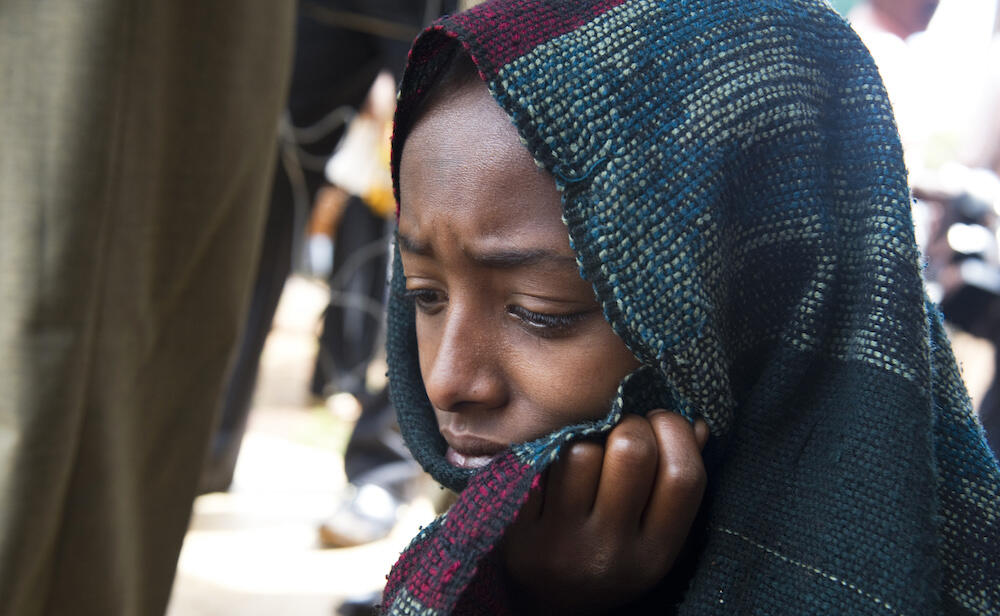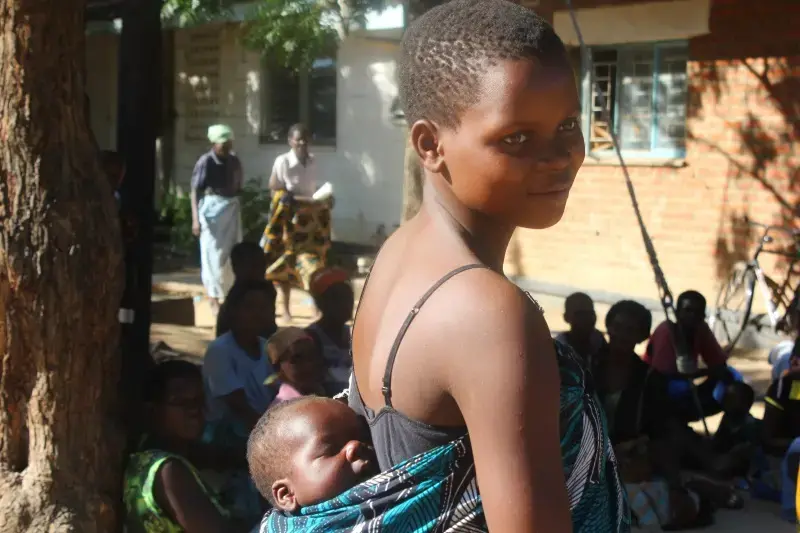A strategy meeting on the Horn of Africa and Yemen was held by UNFPA, the United Nations Population Fund, in Addis Ababa on 13 and 14 October to develop a framework and action plan to guide the Fund’s work and partnerships in the region.
Forced displacement, family separation, and lack of basic protection mechanisms and essential services put women and girls at risk of sexual violence in particular. Together with high fertility rates, this scenario is putting pressure on limited resources and negatively impacting the future of youth.
The humanitarian needs in the Horn of Africa are huge. The analysis we are undertaking collectively helps us to understand the scale of the problem and prepare to meet those needs.

Division, Dereje Wordofa, UNFPA Deputy Executive Director
(Programme), and Dr. Julitta Onabanjo, UNFPA Regional Director
for East and Southern Africa.
© UNFPA Ethiopia/Abraham Gelaw
“The humanitarian needs in the Horn of Africa are huge,” said Dereje Wordofa, UNFPA Deputy Executive Director (Programme) (DED-P). “The analysis we are undertaking collectively helps us to understand the scale of the problem and prepare to meet those needs. The response will be country by country, using existing resources and capacity to better respond in a much more meaningful way.”
The Horn of Africa and Yemen host some of the world’s most vulnerable populations, who are exposed to recurrent cycles of conflict and climatic shocks. Currently, 20 million people are affected by crises in the Horn of Africa, which consists of Djibouti, Eritrea, Ethiopia, Kenya, Somalia, Sudan, South Sudan and Uganda.
Yemen, though not part of the Horn of Africa, is often included in discussions due to its geographic proximity, which exposes the country to mixed migration flows from and to the HoA.
Sexual and reproductive health suffers in times of crisis
These crises have a negative impact on the most vulnerable population’s ability to access sexual and reproductive health services, and also leaves them particularly vulnerable to sexual exploitation and abuse, including rape.
While the Horn of Africa presents a complex humanitarian crisis, it also offers great opportunities for the continent to improve the lives of people, said said Dr. Julitta Onabanjo, UNFPA Regional Director for East and Southern Africa.
We will not see progress, particularly for the 10-year-old girl, unless we come together and address some of the challenges in the Horn of Africa in a comprehensive and holistic way.
“The region has seen many complexities for UNFPA’s main beneficiaries, which are young people and women. We will not get to see the progress we need in those lives, particularly for the 10-year-old girl and how she moves forward, unless we come together and look at how we address some of the challenges in the Horn of Africa in a comprehensive and holistic way,” she said.
The initiative presents a far more coherent and strengthened approach to achieve UNFPA’s transformative results in terms of ending maternal death, ending unmet need for family planning and ending gender-based violence, she added.
Building resilience for women, girls and young people
The initiative brings a resilience framework for the Horn of Africa and Yemen, particularly in building resilience for women, girls and young people, linked to sexual and reproductive health, and gender-based violence, said Bettina Maas, UNFPA Representative for Ethiopia.
It will afford UNFPA a coherent and consistent approach that responds to the humanitarian needs of the population and also takes a long-term view on transitioning them from humanitarian emergency response to development, and helping these nations achieve peace and stability, said Dr. Ademola Olajide, UNFPA Representative for Kenya.
The initiative will ensure that as people begin to rebuild and focus on their development trajectory, they focus on those areas of UNFPA’s mandate which are critical to human development, to progress on rights and to peace and stability.
“This will ensure that as they begin to rebuild and focus on their development trajectory, they focus on those areas of UNFPA’s mandate which are critical to human development, to progress on rights and to peace and stability,” he said.
Across the Greater Horn of Africa, 9.5 million people have been internally displaced, mainly in Somalia (2.65 million), Sudan (2 million), South Sudan (1.91 million) and Ethiopia (1.8 million). Most of these displacements are associated with inter-ethnic conflict and violence. Between 20 and 30 per cent of the affected people are young people who lack access to good education, employment, adult mentorship, and health information and services.
Yemen is generally considered the world’s worst humanitarian emergency – leaving 22 million people in need of humanitarian assistance, of which an estimated 8.8 million people are severely food insecure. More than 2 million have been displaced internally, almost a million are internally displaced returnees, and about 280,000 are refugees and asylum seekers, the majority of whom are from Somalia and Ethiopia. Most Yemeni asylum seekers and refugees have fled to Djibouti, Ethiopia and Somalia.
- Aimee Manimani Nsimire, with additional input from Abraham Gelaw



